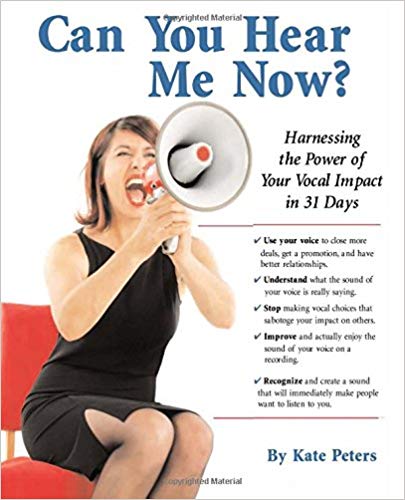How To Be More Expressive
Some people are just more expressive than others. When you listen to an expressive person, you hear lots of pitches and pace changes and even more pauses than someone who is not as expressive. For years, in American business, people were taught to get rid of their vocal variety. Vocal expression was something you had to be careful about in order to avoid being “too emotional,” or even “unprofessional.”

Well, times have changed. Fellow blogger and Forbes contributor, Nick Morgan, says it this way:
“Somewhere between the 20th and the 21st centuries, the general public became tired of hype and decided that it wanted authenticity instead. It’s the most important quality in communications today.”
Expressive speaking, where your words are tied to emotions and meaning, is the sound of authenticity. This means that if you feel an emotion, you can talk about it, reflect it in how you sound, and even be demonstrative without being unprofessional. I don’t recommend that you have a temper tantrum even if you really feel like it, but, in fact, if you don’t demonstrate some emotions, you may lose your audience completely. In addition, besides authenticity, an expressive voice conveys the meaning of the words and makes it easier for your audience to follow what you are saying.
I’ve noticed that many people don’t know how to find the expressiveness in their voice, let alone use it. As with all behavioral changes, you have to be aware before you can do it differently.
Therefore these three steps will get you started on the road to discovering a more expressive you:
- Get in touch with your feelings. (“Oh no,” you say! “Not that again!”) Well, yes. An authentic expression is attached to an authentic feeling. But if that’s hard for you, let’s make it more clinical: when you feel a feeling, how does it sound in your voice? For example, sadness may slow down your delivery. And frustration might make you clip and punch your words. Observe and take notes.
- Play with your voice. You can’t use a sound you can’t hear first. This means that you may need to experiment with the sound of your voice. Think of the different sounds you can make as your expression toolbox. Think of the meanings of the words you say and how that effects the way you say them. Just as sad music is often in a minor key, how do different sounds make you feel? And remember, you weren’t born with the ability to make funny sounds only to keep them to yourself! Play aloud!
- Be brave. Once you have discovered a new palette of sounds to express your emotions, try it out. Practice it with your friends and family. Use it in your next talk. This may feel unauthentic at first because you aren’t used to feeling the feeling and doing it anyway. However, if you keep trying, you may find that you really enjoy getting in touch with your more colorful, human side and that your listeners like it too. Dave Grohl called this the importance of the “The human element. That thing that happens when a song speeds up slightly or a vocal goes a little sharp. That thing that makes people sound like PEOPLE.”
Connect with us on LinkedIn
Connect with the author on LinkedIn
Photo 33164277 © Mimagephotography – Dreamstime.com
Photo 62079818 © Dragonimages – Dreamstime.com





